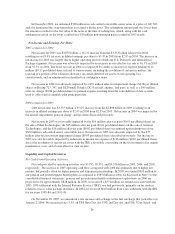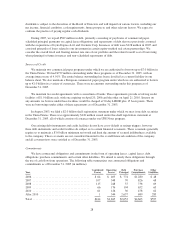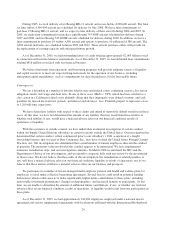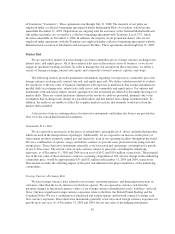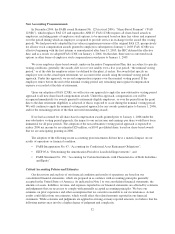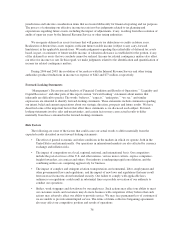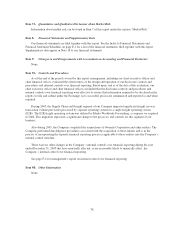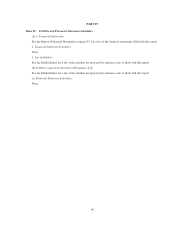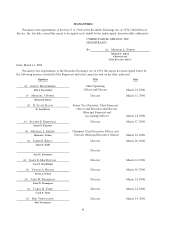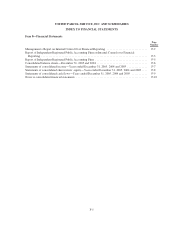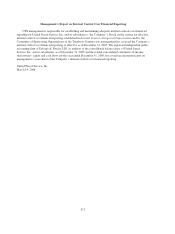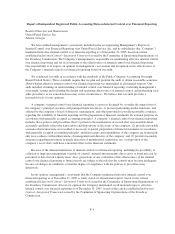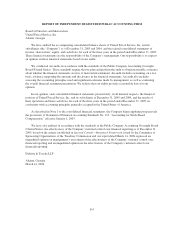UPS 2005 Annual Report Download - page 51
Download and view the complete annual report
Please find page 51 of the 2005 UPS annual report below. You can navigate through the pages in the report by either clicking on the pages listed below, or by using the keyword search tool below to find specific information within the annual report.jurisdictions and take into consideration items that are treated differently for financial reporting and tax purposes.
The process of estimating our effective income tax rate involves judgments related to tax planning and
expectations regarding future events, including the impact of adjustments, if any, resulting from the resolution of
audits of open tax years by the Internal Revenue Service or other taxing authorities.
We recognize deferred tax assets for items that will generate tax deductions or credits in future years.
Realization of deferred tax assets requires sufficient future taxable income (subject to any carry-forward
limitations) in the applicable jurisdictions. We make judgments regarding the realizability of deferred tax assets
based, in part, on estimates of future taxable income. A valuation allowance is established for the portion, if any,
of the deferred tax assets that we conclude cannot be realized. Income tax related contingency matters also affect
our effective income tax rate. In this regard, we make judgments related to the identification and quantification of
income tax related contingency matters.
During 2004 and 2003, the resolution of tax matters with the Internal Revenue Service and other taxing
authorities produced reductions in income tax expense of $142 and $77 million, respectively.
Forward-Looking Statements
“Management’s Discussion and Analysis of Financial Condition and Results of Operations,” “Liquidity and
Capital Resources” and other parts of this report contain “forward-looking” statements about matters that
inherently are difficult to predict. The words “believes,” “expects,” “anticipates,” “we see,” and similar
expressions are intended to identify forward-looking statements. These statements include statements regarding
our intent, belief and current expectations about our strategic direction, prospects and future results. We have
described some of the important factors that affect these statements as we discussed each subject. Forward-
looking statements involve risks and uncertainties, and certain factors may cause actual results to differ
materially from those contained in the forward-looking statements.
Risk Factors
The following are some of the factors that could cause our actual results to differ materially from the
expected results described in our forward-looking statements:
• The effect of general economic and other conditions in the markets in which we operate, both in the
United States and internationally. Our operations in international markets are also affected by currency
exchange and inflation risks.
• The impact of competition on a local, regional, national, and international basis. Our competitors
include the postal services of the U.S. and other nations, various motor carriers, express companies,
freight forwarders, air couriers and others. Our industry is undergoing rapid consolidation, and the
combining entities are competing aggressively for business.
• The impact of complex and stringent aviation, transportation, environmental, labor, employment and
other governmental laws and regulations, and the impact of new laws and regulations that may result
from increased concerns about homeland security. Our failure to comply with applicable laws,
ordinances or regulations could result in substantial fines or possible revocation of our authority to
conduct our operations.
• Strikes, work stoppages and slowdowns by our employees. Such actions may affect our ability to meet
our customers needs, and customers may do more business with competitors if they believe that such
actions may adversely affect our ability to provide service. We may face permanent loss of customers if
we are unable to provide uninterrupted service. The terms of future collective bargaining agreements
also may affect our competitive position and results of operations.
36


